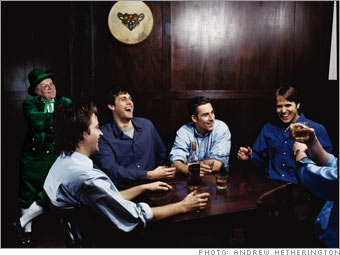Ireland is famous for many things - James Joyce, the Blarney Stone and Bono among them. Not that long ago,the country was also famous for its whiskey. For decades, American bars and liquor stores were stocked with plenty of brands from the Emerald Isle. Then came Prohibition. World War II kept Irish whiskey off the shelves, and afterward Americans began developing a thirst for vodka instead. Until recently, Irish whiskey drinkers had relatively few choices. Basically, Jameson or...Jameson.
But these days, the Irish whiskey industry is experiencing a renaissance. Case sales of the drink increased nearly 130% between 1994 and 2005, reports the Distilled Spirits Council of the United States. And New York City's Park Avenue Liquor Shop alone carries over 30 varieties. Store v.p. Jonathan Goldstein estimates that his selection has doubled in the past decade.
Ironically, you can thank Scotland for this rebound. As single-malt Scottish whisky became more popular in the late '90s, bartenders, store owners and drinkers began exploring alternatives, says John Hansell, editor of Malt Advocate magazine. "The Irish whiskey industry saw how popular Scotch was becoming and said `Why don't we do the same thing?' " And lo, a handful of new labels have since emerged.
What's helped in that growth is the fact that Irish whiskey is very approachable. It has a honeyed taste, with less burn than many other whiskeys. This is because most Irish distillers do not smoke their malted barley (as Scottish ones do); they usually triple-distill the whiskey (Scots do it twice); and they may use a combination of malted and unmalted barley (vs. onlymalted in Scotch). As a result, "it's an easier drink to get down," says Goldstein.
In honor of St. Patrick's Day, I gathered some confirmed whiskey drinkers, including a few native lads and lasses, to get to the bottom of the most popular Irish whiskeys on the market. What we discovered: nothing short of a pot of gold. Slainte.

